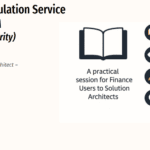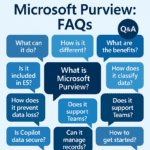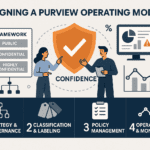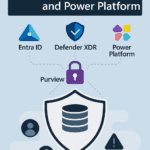

SB504 – ✅ Recurring Contract Billing Parameters in D365 Finance

Recurring Contract Billing Parameters are the backbone of how recurring invoices, revenue recognition, and billing schedules are managed in Microsoft Dynamics 365 Finance.
These parameters define critical behaviours such as how billing cycles align with calendar months, how revenue is recognized, how terminations are handled, and whether support or renewals are enabled.
Configuring them correctly ensures that billing is accurate, automated, and compliant with accounting standards like IFRS 15 and 16.
This article explains the purpose of each available parameter and provides a real-life example to help you understand how each one might be used in industries like SaaS, telecom, leasing, or professional services.
⚙️ Key Parameter Categories — Purpose and Real-Life Examples
🔄 Billing Schedule Group
Groups billing contracts by frequency or pricing logic.

✂️ Termination Type
| Type | Description |
|---|---|
| Adjust schedule | Ends billing and reverses unearned revenue. |
| Bill remaining | Bills all future revenue at once when terminated. |
| No adjustment | Leaves billing and revenue schedules untouched. |
✔️ Example: A leasing company terminates a forklift contract and bills the remaining amount as a lump sum.
📛 Unique Schedule Type
| Option | Description |
|---|---|
| None | Multiple schedules per customer allowed. |
| Customer | One schedule per customer. |
| End user | One schedule per end user. |
✔️ Example: A telecom provider assigns a unique schedule per end user to track individual plan usage.
📆 Align to Month
Aligns billing cycles with calendar months.
✔️ Example: A professional services company aligns billing with month-end to streamline reporting cycles.
📉 Prorate Partial Periods
Bills proportionally if contract starts/ends mid-month.
✔️ Example: A SaaS company charges new users based on the number of days left in the billing period.
📏 Proration Method
| Method | Description |
|---|---|
| Daily | Prorate based on number of days. |
| Monthly | Prorate based on equal monthly splits. |
✔️ Example: A cloud provider uses daily method to calculate mid-month plan upgrades accurately.
⏸️ Hold
If enabled, places new billing schedules on hold.
✔️ Example: A consulting firm sets contracts to ‘Hold’ for internal review before releasing them for billing.
💬 Invoice Transaction Nature Code
| Option | Description |
|---|---|
| Sales order | Standard invoice flow. |
| Free text invoice | Manual billing format. |
✔️ Example: A SaaS vendor generates sales order invoices automatically for monthly subscriptions.
🔁 Align Deferral to Billing
Matches deferral periods with billing cycles.
✔️ Example: For a £1,200 annual subscription:
| Transaction | Debit (GBP) | Credit (GBP) |
|---|---|---|
| Contract Start | 1,200 | Unearned Revenue |
| Monthly Recognition | 100 | Service Revenue |
🧮 Automatically Create Revenue Split
Auto-applies revenue splits to billing lines.
✔️ Example: A telecom company splits £100/month plan revenue between voice, data, and equipment.
👥 Customer Split
Allows shared billing between customers.
✔️ Example: A global IT company splits billing across internal departments consuming shared cloud services.
🧾 Sales Order Creation Settings
🧾 Consolidate All Periods / By Customer / By Item
Controls how invoices are grouped.
✔️ Example: A telecom provider groups monthly internet and TV subscriptions into one invoice by customer.
📦 Split by Item Group
Splits invoice lines by item type.
✔️ Example: A company prefers manual control, so the feature is not enabled in their billing workflow.
📤 Posting Option
| Option | Description |
|---|---|
| Create Sales Order | Only creates the sales order. |
| Show Posting/Proposal Page | Manual invoice review. |
| Create Free Text Invoice | Non-sales order invoice. |
| Post Invoice Automatically | Fully automated invoice and posting. |
✔️ Example: An electricity distributor posts bills automatically after meter data is processed.
🕒 Add Billing Dates to Item Description
Appends billing periods to item name.
✔️ Example: A CRM provider adds ‘May 2025 License Fee’ in invoice lines for billing clarity.
⚙️ Exclude Zero Consumption
Skips lines with no usage.
✔️ Example: If disabled, all items—even with zero usage—appear on the invoice.
🧾 Don’t Print Child Items
Suppresses child-level items in invoice output.
✔️ Example: Enabled for cleaner invoicing.
📦 Support and Renewals
🧩 Auto Enable Support and Renewal
Auto-activates support services in billing.
✔️ Example: An IT company includes monthly support fees when new client contracts are created.
🎯 Support and Renewal Level
| Level | Description |
| Tier 1 | Basic Support |
| Tier 2 | Premium Support |
✔️ Example: Default set to Tier 1.
🔢 Support and Renewal Quantity
Billed based on invoice quantity, fixed unit, or other.
✔️ Example: Set to Invoice Quantity.
🗓️ Default Support and Renewal Start Date
| Option | Description |
|---|---|
| Transaction Date | Starts from invoice date. |
| Manual | Entered by user. |
✔️ Example: Transaction Date is used for automation.
💰 Include Discount in Calculation
Toggles discount inclusion in escalations or renewals.
✔️ Example: Disabled for consistent pricing.
🧭 Support / Renewal Frequency
Set how often support or renewals occur.
✔️ Example: Monthly for both.
🧱 Align by Item Group
Aligns support/renewal by item category.
✔️ Example: A company prefers manual control, so the feature is not enabled in their billing workflow.
📌 Align to Next Unbilled Period
Moves renewal dates forward to the next billing date.
✔️ Example: Enabled to avoid overlapping invoices.
🔁 Copy Serial Number
Transfers serial numbers to renewals.
✔️ Example: A device leasing firm retains serial numbers on renewal to track equipment lifecycle.
📈 Escalation
🧮 Consumer Price Index Calculation
| Option | Description |
|---|---|
| Prior Consumer Price Index | Uses last year’s CPI value. |
| Base Consumer Price Index | Uses a fixed CPI base year. |
✔️ Example: Prior CPI is used to apply a 5% price increase at renewal.
🧾 Billing Schedule Lines
🔄 Track Price Change
Monitors and logs rate adjustments.
✔️ Example: Disabled.
🆕 Default New Line to Active
Auto-activates new billing lines.
✔️ Example: Disabled while header is on hold.
🧮 Generate Invoice
🔍 Filter By
| Option | Description |
|---|---|
| Start Date | Use contract start date. |
| End Date | Use contract end date. |
✔️ Example: A leasing firm bills equipment maintenance from the lease activation date.
💱 Unbilled Revenue
🧾 Post General Journal Automatically
Posts revenue entries for unbilled contracts.
✔️ Example: A company prefers manual control, so the feature is not enabled in their billing workflow.
📋 Default Journal Name
Defines the name of the general journal used for posting unbilled revenue or adjustments.
✔️ Example: Set to GL_Jrn to post unbilled balances automatically to the designated journal.
📈 Short-Term Unbilled Method
| Option | Description |
|---|---|
| None | No tracking |
| Rolling period | Rolling balance tracking |
| Fixed year | Year-based tracking |
✔️ Example: Rolling Periods used.
🧾 Renewal Journal Entry Controls
📑 Require Journal Entry for Renewal
Enforces a manual journal entry when a renewal period begins. Useful for companies needing approval or audit tracking before posting.
✔️ Example: Disabled, so renewals proceed automatically without manual journal entry.
🧾 Auto Create Journal for Renewal
Automatically generates journal entries for renewal transactions.
✔️ Example: A company prefers manual control, so the feature is not enabled in their billing workflow.
🧮 Use Unbilled Offset Account
Posts amounts to a separate offset account to track revenue that has not yet been billed. Helpful in managing multi-period contracts or foreign currency adjustments.
✔️ Example: A company prefers manual control, so the feature is not enabled in their billing workflow.
✂️ Termination
💳 Credit Option
| Option | Description |
|---|---|
| Issue credit | Credit memo is generated. |
| Credit adjustment | Manual GL correction. |
✔️ Example: Selecting ‘Issue Credit’ automatically generates a credit memo at cancellation.
💵 One-time Can Terminate with Refund
Allows one-time billing contracts to be terminated with a refund automatically.
✔️ Example: A company prefers manual control, so the feature is not enabled in their billing workflow.
🔁 Prorate Daily
Enables proration at a daily level when partial billing is used. Ensures customers pay only for the exact number of days in service.
✔️ Example: A company automates this setting to streamline recurring billing processes.
🧾 Create Deferral for Credit
When enabled, creates deferred revenue schedules even for credited amounts. This helps align revenue reversal with accounting periods.
✔️ Example: A company prefers manual control, so the feature is not enabled in their billing workflow.
🔄 Trade Agreements
📋 Use Trade Agreements
Allows the billing schedule to pull pricing from existing trade agreements. Ensures pricing consistency with sales order pricing logic.
✔️ Example: A company automates this setting to streamline recurring billing processes.
📊 Use Weighted Trade Agreement Price by Billing Period
Calculates an average unit price across multiple trade agreements applicable to a billing period. Useful when overlapping or tiered pricing agreements exist.
✔️ Example: A company prefers manual control, so the feature is not enabled in their billing workflow.
🛠️ Update from Trade Agreement Only at Renewal
Prevents mid-cycle pricing changes from affecting current billing. Updates trade agreement prices only at the time of renewal.
✔️ Example: A company automates this setting to streamline recurring billing processes.
🤝 Sales Agreements
Integrates billing with sales agreements to apply agreed pricing and terms to billing schedules. Useful for long-term B2B contracts.
✔️ Example: If disabled, pricing is entered manually instead of pulling from a sales agreement.
📌 Conclusion
Understanding the purpose of each billing parameter in D365 ensures accurate and flexible recurring billing setups across various industries. By properly configuring these options, companies can streamline invoicing, improve compliance, and adapt to real-world subscription scenarios—whether in software, telecom, leasing, or professional services.
Expand Your Knowledge: See More Subscription Billing Blogs
I am Yogeshkumar Patel, a Microsoft Certified Solution Architect and ERP Systems Manager with expertise in Dynamics 365 Finance & Supply Chain, Power Platform, AI, and Azure solutions. With over six years of experience, I have successfully led enterprise-level ERP implementations, AI-driven automation projects, and cloud migrations to optimise business operations. Holding a Master’s degree from the University of Bedfordshire, I specialise in integrating AI with business processes, streamlining supply chains, and enhancing decision-making with Power BI and automation workflows. Passionate about knowledge sharing and innovation, I created AI-Powered365 to provide practical insights and solutions for businesses and professionals navigating digital transformation. 📩 Let’s Connect: LinkedIn | Email 🚀




















Post Comment